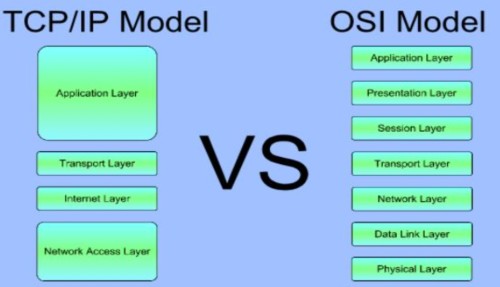The Open Systems Interconnection (OSI) and the Transmission Control Protocol/Internet Protocol (TCP/IP) are two of the most prominent and widely used communication models for computers. They are both layered models and both support the same communications functions; however, there are several key differences that distinguish them from each other.
The OSI model is a conceptual framework developed by the International Organization for Standardization (ISO). Its primary goal was to establish an international standard for data communications that would be independent of any particular vendor or protocol. To achieve this end, they divided communication into seven distinct layers: Physical, Data Link, Network, Transport, Session, Presentation, and Application. Each layer dealt with a different aspect of communication and the responsibility for validating data passed from one layer to another was assigned to the layer above it. As a result, the OSI model allowed for standardized implementations of communication protocols that could be used in any network.
The TCP/IP model, on the other hand, is a specification developed by the U.S. Department of Defense for networking military computers. It was adopted by the Internet Engineering Task Force and has become the de-facto standard for civilian communication networks. Unlike the OSI model, which is divided into seven layers, the TCP/IP model has only four – Physical, Internet, Transport, and Application. This difference is primarily due to the fact that the TCP/IP model deals only with IP-based networks and therefore does not need the additional layers present in the OSI model. The TCP/IP model also employs a different methodology for handling data validation; instead of assigning the responsibility to the layer above, each layer checks the data itself and passes it on to the lower level.
Despite these differences, both the OSI and TCP/IP models have been extremely successful in enabling communication between computers over modern networks. By providing a comprehensive and rigorous standard, they have facilitated the development of a variety of applications and technologies that are essential for today’s global digital network.




